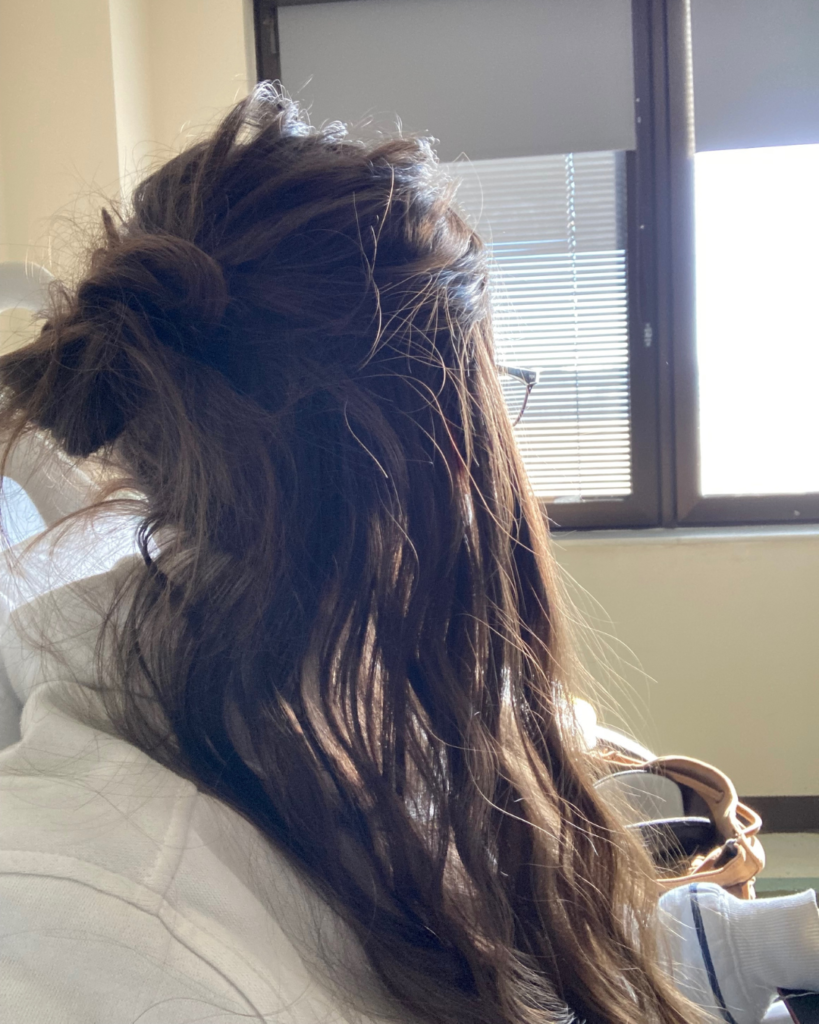Hi there! Welcome to part three of this six-part blog series about my crazy rollercoaster journey with autoimmune pancreatitis.
Did you miss part one or two? Check them out here!
- Part 1: My first hospital stay, what causes pancreatitis, my pancreatitis symptoms and off-the-charts lipase levels, and my in-hospital treatment plan.
- Part 2: My second hospital stay, testing and procedures at the hospital, my abdominal MRI, starting a low-fat diet and digestive enzymes.
This post will cover my third (and final) hospital stay, my specialty endoscopy procedure, and my super strange pathology results.
We left off in late December 2023. It was just days after being released from my second hospitalization when my pancreatitis symptoms returned YET AGAIN. And, for the third time that month, I went to the ER.
Hospital Stay #3
December 24th – 27th, 2023
However, this time I went to a different hospital. I was annoyed that my first two hospitalizations consisted of the same things—bowel rest, pain meds, and CT scans. That treatment plan clearly wasn’t working and I was frustrated that my medical team at the hospital wasn’t doing anything different to get to the bottom of my pancreatitis.

Testing at the Hospital
Blood Work
When I arrived at the ER, the first thing they did was their standard blood work. This consisted of checking my lipase, the lab that’s tied to inflammation in the pancreas.
My lipase was crazy high again, at 3,000 U/L. (The normal range is The normal range is between 13 – 75 U/L! I was discharged from my second hospital stay with a lipase number of 2,110 U/L, so it had increased a lot over the last few days.
Endoscopic Ultrasound (EUS)
In my hospital room, they had me meet with two GIs on rotation.
If you’ve been reading my blog for a while, you probably know that the phrase I say on repeat is, “You are you own best advocate.” Well, I took my own advice. I explained my frustrations and told them that I wanted to do something different this time around.
To my relief, the GIs agreed! They said they’d introduce me to an endoscopist—and not just any endoscopist—but one of the top endoscopists in the state. He’s a gastroenterologist specializing in therapeutic endoscopy, including balloon-assisted enteroscopy, stenting, endoscopic mucosal resections and dissections, and interventional EUS.
I met with him the morning after Christmas. He was kind, curious about my case, and one of the only physicians who actually seemed to want to get answers. He said he was considering me for an endoscopic ultrasound (EUS), which is a procedure that combines endoscopy and ultrasound to look in and around the pancreas.
I told him that getting an EUS would be the best Christmas present ever. This made him smile. I had the EUS later that day.
EUS Results & Prednisone
The procedure was super simple. It was essentially treated the same as an upper endoscopy. My prep was easy since I was already NPO, and I received anesthesia for the procedure itself.
We received the results quickly.
Thankfully, they found no pancreatic stones or masses and identified that my pancreas was indeed enlarged, swollen, and inflamed. They also took biopsies and the pathology report stated something interesting: I had IgG cells (antibodies that are activated when there’s an immune response in the body) but I didn’t have any IgG4 cells. IgG4 cells are a subclass of IgG cells that are seen with autoimmune pancreatitis (AIP) type 1.
Because of the lack of IgG4 cells, my pathology results read: Positive for IgG plus plasma cells. However, no IgG4 plus plasma cells noted. So these findings are not typical of autoimmune pancreatitis.
Ultimately, this ruled out Type 1 AIP. More likely, I had Type 2 AIP, but the endoscopist later explained to me that even the images were inconsistent even with Type 2 AIP. It’s clear there was some autoimmune response in my pancreas, but it didn’t present as typical Type 2 AIP.
Something wasn’t quite adding up.
Since there was clearly some sort of autoimmune component, the endoscopist immediately put me on prednisone. Steroids are an effective first line of treatment for Type 2 AIP, and most patients respond quickly. He had me start 40 mg prednisone right there in the procedure’s recovery room. Never had I been so happy to take prednisone. Finally, we were getting somewhere. Finally, we were getting answers. And, best yet, I started to feel better just hours after taking the steroid.

Additional Testing
Tracking Lipase
I stayed at the hospital for another day, waiting for prednisone to take its full effect. This hospitalization lasted for three nights and four days, and they tracked my lipase each day:
December 24th, 2023: >3,000 U/L
December 25th, 2023: 2,386 U/L
December 26th, 2023: 2,814 U/L
December 27th, 2023: 979 U/L
Look at that crazy drop! Just one day after starting prednisone, my lipase dropped by over 50%! 979 U/L is still very high (normal range is between 8 – 78 U/L) but it was a GREAT sign that prednisone was working.
Follow Up Labs
When I was out of the hospital two weeks later, I returned to clinic to do some followup labs. This time, I was able to walk from the car to the office without too much pain. Prednisone was certainly working.
I did the follow up labs. Everything looked great, including my liver numbers and my inflammation markers which included sed rate, GGT, and CRP! Yet another good sign that prednisone was stopping my immune system from attacking my pancreas.
3-Gene Pancreatitis Panel
I also did a specialty lab called a 3-Gene Pancreatitis Panel. This is a blood test that analyzes three genes to screen for hereditary pancreatitis. Although we suspected mine was Type 2 AIP, I was glad my physician’s assistant ordered this test, just to rule it out. As suspected, it came back negative.
Read Part 4 in This Pancreatitis Series
The next few weeks were happy ones. I was finally able to eat with little to no pain. I felt like I was starting to get my life back. However, things weren’t that easy—which I discovered when I started my first prednisone taper.
Read my next blog post where I share about my THREE attempted prednisone tapers and the first warning sign that my illness might not be type 2 autoimmune pancreatitis after all.
Want more information on autoimmune pancreatitis, my symptoms, and this crazy diagnosis journey? I’m breaking my Instagram hiatus to share lots more info about this lengthy health update. Find me on Instagram here.
Thank you for reading, and chat more soon!






Leave a Reply